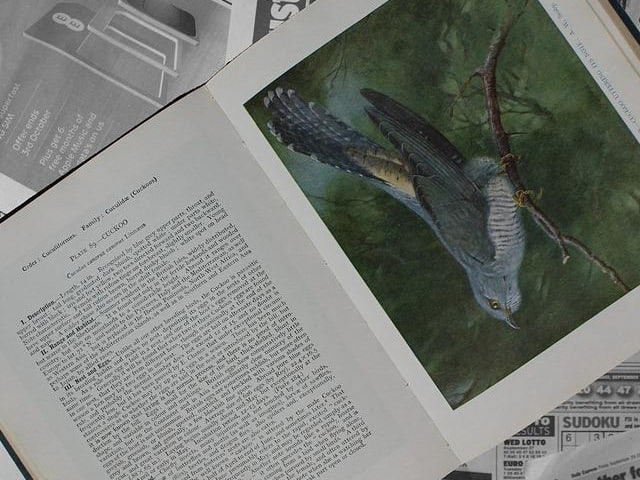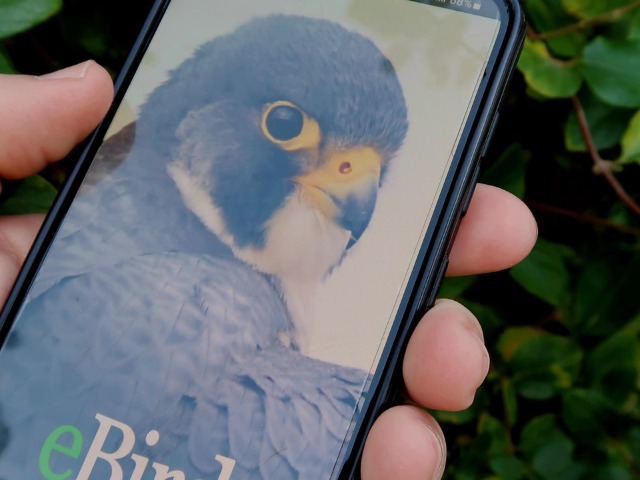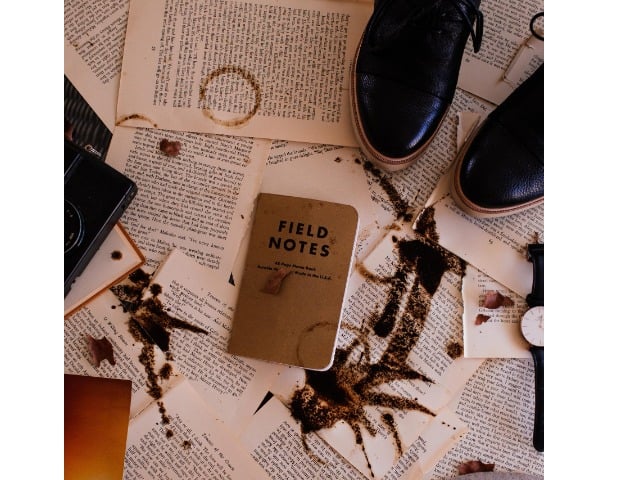When you think of Florida, you think of outdoor beach fun. But, did you know that in The Sunshine State, birding comes in second as a form of outdoor activity for both visitors and residents? To fully enjoy birdwatching, what basic resources does one need to jump into this popular hobby?
To start birdwatching in Florida, you’ll need these resources:
- Bird field guides
- Apps
- Quality binoculars
- Weather-proof field notebook/nature journal
Opinions are often subjective when it comes to rating these resources. We’ll help you understand the basics and guide you in deciding the best choices for a beginner birdwatcher.
Since 2020, more people have taken up bird watching in Florida than ever before. Birdwatching and birding are largely enjoyed by more than an estimated 45 million people in the United States, and 87% of those are backyard bird watchers. Bird watching has evolved to become a favorite pastime that’s popular among young and old alike.
Whether you’re bird watching in Florida off the beaten trail, in your local park, a national park, wildlife reserve, or simply from your own backyard, you are a birdwatcher. Welcome!
Interested in learning about the songbirds of Central Florida? You can see everything in our comprehensive A-Z guide.
You can learn more about the songbirds of Central Florida in our comprehensive A-Z guide.
Bird Watching Books for Beginners

Good bird field guides are important for beginner and seasoned birders and bird watchers alike
No single bird book can show or cover everything. Many bird enthusiasts like to stick with the tried and true field guides that have been around for years, like the Peterson field guides. Others prefer the newer Sibley, Stokes, or National Geographic field guides. For bird watching in Florida, it can be helpful to collect several bird field guides for extended reference.
*bullets start here
Seasoned birdwatchers commonly use multiple field guides. Some things to look for when selecting North American bird field guides are:
Who will be using the guide? Young children may want a simple guide with fewer words and bigger images. Adults that are new to bird watching in Florida may want to look for something more informative, but not complex.
Region. Make sure that it’s appropriate for your region. What area do you want your guide to cover? Is it foing to cover the eastern part of North America or do you need a guide that’s specific to your region? Do you want to dial it in even more for backyard bird watching in Florida?
Layout. Does the field guide layout have a useful order? Is it easy to read and use? Some other things to consider: Quick reference. Color-coded pages or tabs. Color rang maps. Information on foraging, habitat, nesting, and other behavior. Helpful side notes for field marks to identify individual species, female male, juvenile. Hybrid illustrations or photos. Bill shape, wing shape, in-flight illustrations.
Photographs or illustrations. Types of imagery to consider: real photographs—some birdwatcher feel that real bird photos help when identifying a bird. Illustrations—some birdwatchers prefer illustrations, feeling that photos lack key identification qualities, particularly field marks.
Size. Do you want a field book that you can carry with you or one that you leave at your house? If the field guide is too large to carry around, you may not want to use it. If the field guide i too small, there may be less useful information available. Some birdwatchers prefer an app for their smartphone.
*bullets end here
Popular choices amongst experienced enthusiasts seem to be digital images based on real photos, illustrations, or digitally remastered original artwork. Seasoned birdwatchers often prefer the drawings of experienced and knowledgeable experts who can help identify known field marks.
Still, there are those who want real photography in their bird field guides. While these field guides provide excellent information, there are a few cons. Inconsistent lighting can cause photos to have off colors. Sometimes photos can be distracting, making it difficult to make comparisons with similar species, identify specific species, and detect key features of field marks on many Florida birds.
Often, representation of all the variations of a single species, such as the juveniles, adults, males, females, and seasonal plumage changes is lacking. Poses can be limited, as well. However, that doesn’t mean that they can’t have a place alongside other field guides as a complementary supplement or as a stand-alone.
*bullets start here
Some popular bird books include:
The Kaufman Field Guide to Birds of North America
The Peterson Field Guide to Birds of North America
Sibley Birds East: The Sibley Field Guide to Birds of Eastern North America
The National Geographic Field Guide to Birds of North America
National Audubon Society Field Guide to North American Birds: Eastern Region
The Stokes Field Guide to the birds of North America
Smithsonian Field Guide to the Birds of North America
Smithsonian Kids’ Field Guides: Birds of North America East
Birds of Eastern North America: A Photographic Guide (Princeton Field Guides)
The National Geographic Kids Bird Guide of North America
*bullets end here
Apps for Birdwatchers

Some smartphone apps let you find nearby sightings and birdwatching hotspots
Many people own smartphones. There are some bird watching apps that utilize that technology. They remove the need to carry a physical field guide book around with them. Additionally, they eliminate the need to comb through pages in order to find the information that they’re looking for. This makes them very handy for bird watching in Florida.
Instead, by using a smartphone with a bird watching app, you’ll have access to identification information right at your fingertips. Apps are easy to search on and navigate to find an unknown bird.
You can do a smart search using keys and filtered questions to quickly pinpoint your targeted Florida bird based on general attributes of color, size, and habitat. It could be further refined with a smart search involving bill size, wing shape, and field marks.
Bird watching apps don’t fall short in providing information either. They offer range maps, behavior, and audio clips of bird songs, as well as drawings and photos to help you make confident identifications. They can also help to determine whether the targeted Florida bird is a rare sighting, year-round resident, or migratory.
*bullets start here
Here’s a list of electronic birdwatching field guides to get you up and running with your smartphone:
Audubon Bird Guide: Lists more than 800 North American bird species. Offers bird IF. Provides thousands of photos. Has eight hours of songs and calls on audio clips. Supplies range maps. Give a personal journal to keep a detailed record of every birds you see/ Allows you to see where nearby birding hotspots are, as well as real-time sightings from eBird. Offers a photo feed to share your bird shots with other Audubon Bird Guide users.
iBird Pro Guide to Birds: Catalogs over 900 special of North American birds and offer four additional databases for three other countries and Hawaii. Offers multiple photographs, which include most of its 9000 species of birds and around 1000 high-resolution HDR hand-drawn illustrations with the ability to toggle field makes. Boasts more than 4,000 bird songs and calls. Provides an artificial intelligence (AI) feature that can identify a bird image from photos, even if they are of poor quality. Has a search engine with over 35 filters to refine your search to help you make a precise match of a bird .
Sibley Birds 2nd Edition: Birds of North America: provides information on over 930 bird species of North America. Has an easy-to-navigate menu. Supplies a grid view with thumbnails. Offers a two-species comparison side-by-side view.
Displays species names in English, French, or Spanish while also providing the scientific Latin name. Has over 2700 calls and song recordings that cover most species. Provides an icon that appears next to each species in a selected location. This indicates its abundance throughout the region within the Us or Canada. Offers a feature that shows all similar species. Has a smart search with refined search filters such as habits, type, size, body shape, color, and pattern. Allows you to keep a personal list of bird species that you’ve seen. You can sort the list taxonomically, as well as backup your list tot a could service.
Bonus supplemental apps to enhance your bird watching:
Merlin Bird ID by Cornell Lab: Provides a customizable field guide and assistance that helps you identify birds. Offers thousands o photos, songs, and calls provides in bird packs for specific regions around the world. Helps identify birds in photos using built-in-algorithms. By choosing a photo from your camera roll or by taking a photo, the app will suggest an identification based on your location.
eBird: Has a global online database developed by Cornell University. Used my over 550,000 birdwatchers around the world. Allows you to keep a record of your sightings and share those records in areas of scientific research, education, and conservation. Uses GPTS-enabled location, map tools to find eBird hotspots, and much more. Is translated into several languages.
Bird Journal: Has a customizable record-keeping journal for your bird observations. Enables you to share your records to contribute to conservation efforts. Stores all data on your device, providing you access even while out in the field or abroad, and is stored in Bird journal’s cloud.
Bird Song Id USA song & calls: Helps to identify birds that you can hear around you by identifying a recording that you’ve taken of a bird’s song or call while suing the app.
BirdsEye Bird Finding Guide: Is used in conjunction with eBird—Cornell University’s Lab of Ornithology’s online global database of birds. Allows you to share information ebtween your BirdsEeye and eBird accounts. BirdEye cam them be sied to either help find parituclar birds in your area of anywhere from your listst or to locate birding jotspots. Provide you with dribign firection to each sighting or jotspot.
Chirp! Bird Song & Calls USA: Has over 300 bird songs and call recording from birds thorughout the continental US. Many of these recording come from Macaulay Library at the Cornell Lab of Ornithology. Teached you to infeity the birds you hear by their sonfs or calls. Tests your memory with quizzes. Allows you to listen to birds songs and call on a slifshow veature.
BirdGenie: Helps you accurwatly identidy bird species by using your smartphone for recording their birdsong. Includes around 200 bird songs from 100 species of birds tht are likely to be heard year-round in backyard, parks, and more.
*bullets end here
Weather Proof Notebook for Birding

Small weather-proof pocket notebooks are ideal for taking good notes of bird sightings when you’re in the field
Birders often carry a convenient, pocket-sized field notebook with them while bird watching. A field notebook will help you become a better birdwatcher. It helps you readily recognize identifiable details on the birds you’ve seen based on your records of individual characteristics and attributes.
Field notebooks are perfect for lengthy, or short, but precise descriptions of your findings, where you can also add your own thoughts and comments.
*bullets start here
Keep track of details such as
Field marsk
Size
Features, such as bull shape, eye color, and and tailfeather, etc.
Birdsong
Behacoir
Habitat
Diet
Nesting and roosting sites
Similariteis to other bird species
Abnormalities—behavior, nesting, plumage, or the eneral appearacne of a bird.
*bullets end here
There are apps such as eBird, BirdEye Bird Finding Guide, and Bird Journal available to keep notes using your smartphone. However, most are not as detail-oriented as writing in a field notebook. Oftentimes, questions come up later, requiring more clarity. Your field notebook notes can help answer these questions.
Some birders prefer to use their field notebooks while out in the field and then later transfer the information to their birdwatching app. These apps are definitely not without merit, as they allow you to easily categorize your written notes and share them with others.
The goal of taking notes is to hold a record of what you observe as you see it in real-time, not afterward when your memory recall might not be as sharp to minute details. Notes can help you determine the age and gender of birds, which will further help to clarify identification. This can also assist you in telling apart one similar bird species from another.
Keeping detailed notes of your bird sightings will help determine when, where, and if you are likely to see them again. Adding your thoughts to your field notebook about these things can also determine if the sighting is rare or unlikely. When documenting bird sightings, be sure to include the location, date, and time.
A good field notebook will be weather-proof, tear-resistant, and easily fit in a pocket. You’ll be able to write with a pencil or waterproof pen, if you prefer, without the risk of the ink bleeding if the paper gets wet. Your pages will be protected, come rain or shine.
Nature Journal Notebook – Creatively Document Birds

Nature journaling provides you with a creative outlet that allows you to fully appreciate bird watching in Florida
Nature journaling isn’t part of the essential gear for beginner birdwatchers, but it can help you hone your observational skills. This activity will enrich your personal birdwatching experience and connect you more closely with nature.
You don’t need to be an artist, have great at spelling, or be grammatically skilled. Journaling is purely to help you advance your birdwatching ability—a skill anybody can learn. Not only will journaling help you to see what’s actually in front of you, but it’s also a fulfilling activity that will leave you with a memorable keepsake.
Both nature journals and field notebooks can overlap, but they serve different purposes from each other. Field notebooks are for scientific documentation, whereas journaling is more for personal enrichment. This is great for adding interest, expressing your creativity, and recalling your experiences more vividly.
*bullets start here
Usefuls upplies to consider adding:
A journal, such as a Moleskine
Watercolors
Pens
Colored pencils
Miscellaneous materials
Erasers
Blender stomps
Pencil sharpwrners
Rulers
Stamps
Stickser
Whatever you’re observing at the moment or thoughts that come to mind, you can jot them down in a nature journal. It doesn’t matter how you do it. There’s truly no right or wrong way.
With nature journalin, you can:
Sketch a birb
Draw a map
Make a diagram
Make some bullwted notes
Add some symbols
Note interesitng or important information—the season, weathwr, and youe urroudnings
Press leaves or flowers from your location
Descrie birdsong that you hear
Observe bird feather colros, patterns, and size
Take note of bird nests and eggs
And more
*bullets end here
——————————————————————————————————————————————————
Choosing Binoculars for Bird Watching In Florida
While Florida’s birds can be enjoyed without special equipment, a decent pair of binoculars is a good investment, and particularly necessary for birding.
Binoculars are used to bring birds visually closer for observation. They are like having a telescope for each eye that enhances and improves your ability to see fine details more clearly while bird watching in Florida.
Some low-budget binoculars are sold as birdwatching binoculars. Oftentimes, these binoculars result in unclear and hazy images.
Cheaper binoculars are more likely to have plastic lenses rather than glass lenses. While they can handle more abuse from damage due to careless handling, the cheaper lenses are more easily scratched and can become foggy over time. Good quality optics are directly proportional to price.
Binoculars have a wide range of pricing with a low end of less than $20 to more than 2K. Binoculars that retail for less than $100 typically are inferior in optics and in construction. Most birders advise investing in the best binoculars you can afford.
You should be able to find a decent pair of beginner birdwatching binoculars within the price range of $100–$300. You can find a mid-priced pair between $300–$500 and an exceptional pair for around 1K or more.
We will explain some of the specifications that are important to consider when choosing a pair of binoculars for bird watching in Florida.
Selecting Binoculars that are Going to be Best for You
Many people say the bigger the better. However, it isn’t always true when it comes to birdwatching binoculars.
While it’s true that larger objective lenses will give you a brighter image with higher resolution and allows more detail in deep shadows, it makes binoculars heavier—upwards of 2.75 lbs. While this may not seem like a lot of weight, they do get quite heavy on your neck. Ideally, binoculars should be just under 2 lbs (30 ozs).
Compact binoculars, while lightweight and smaller, are not ideal for most birders. Additionally, their field of view is narrow, limiting your ability to observe your targetted bird.
If your only interest is to watch the birds in your backyard, you probably don’t need to worry about how much binoculars weigh. They may not need to be as durable as a pair of binoculars for somebody who is hiking or trekking through forests. However, you should consider the lens material.
Understanding Binocular Power
You’ll find that binocular specifications consist of two numbers that are separated by an x. The x refers to how many times the lens will magnify your view. The first number refers to magnification. So, for example, 10×32 means that an object, for instance, a bird, will appear ten times closer than what you could see with the unaided eye.
The larger the magnification number, the harder it is to get a steady view when you’re holding it with your hands. If you’re using a tripod to steady the binoculars, then it won’t be a problem, but if you’re looking out your window or are holding them by hand, you’ll have better luck having a steady view if you keep your magnification to 10 and under.
In the specifications, the second number represents the lens diameter. In a pair of 10×32 binoculars, the diameter of the front lens is 32 millimeters (mm). This number determines how much light the lens receives. A higher number lets in more light.
This is helpful if you’ll be looking at birds in low light. For example, in the early mornings and late evenings when the light is dimmer. Or, any time when extra light is needed to see objects more brightly.
Eye Relief Explained
With all binoculars, there is an ideal distance between the ocular lens and your eye that enables you to see the entire field of view without any black, fuzzy ring around the outside edge of the image. The further your eyes are from that ideal distance, the smaller the portion of the image you see.
15mm or less can be suitable for people who don’t wear glasses or for people who use contact lenses. If you wear glasses or even a pair of sunglasses while looking through binoculars, your eyes are that much further away from the ocular lens. Because of that, you will get a much-reduced field of vision unless you use a longer eye relief.
You need a length that’s long enough to accommodate your glasses and still allows you to get a full field of view. The eye relief length should be at least 16mm–18mm. The manufacturer’s specs will list these details along with other important information about the binoculars.
Porro Prism vs Roof Prism Binoculars
Prismatic binoculars use two types of prisms—Porro and Roof. Each barrel of a binocular chamber holds two large wedges of glass prisms. As a result of the curved lens, the image is actually turned upside-down and flipped when looking through binoculars. As light passes over the prisms, the orientation of the image is corrected, and you see the image right-side-up.
There are three standard types of Porro prisms (not to be confused with Roof prisms)—BAK-4, BK-7, and K9. BAK-4 provides a circular view while BK-7 and K9 provide a rectangular view. Both BK-7 and K9 may cause a blurred and darkened image edge.
BAK-4 is considered preferable and is found in mid to high-end binoculars. However, many people are just as happy with the cheaper BK-7 prisms as they are with BAK-4, so it’s important to try binoculars before you buy them.
Porro prism is less complex to manufacture, and, thus cheaper to buy. However, they will also be bigger and heavier than Roof Prism binoculars, so there’s always a compromise.
Both Porro and Roof prisms are set up differently, each having pros and cons.
Binoculars Close Focus Distance
The focus distance (close focus) is how close the binoculars can be made to focus on an object while still keeping the object in sharp focus. A general-purpose binocular generally has a close focus of 10x. For the observed object to appear clearly in focus, you have to be at least 10 feet away from it.
Good backyard birdwatching binoculars should have 10x or less close focus for viewing birds close to your window or bird feeder. 8x is even better because it will eliminate some of the problems of a further focal distance, namely image shake, narrowed field view, and some dimness that the 10x can create. Anything lower than 8x magnification likely won’t be powerful enough to bring your bird image close enough to pick up finer details, such as field marks.
Many birders say that a good beginner binocular to start with might be an 8×40 or 8×42. This range will work well for most situations for beginner birdwatchers. They are not terribly heavy, yet still durable.
